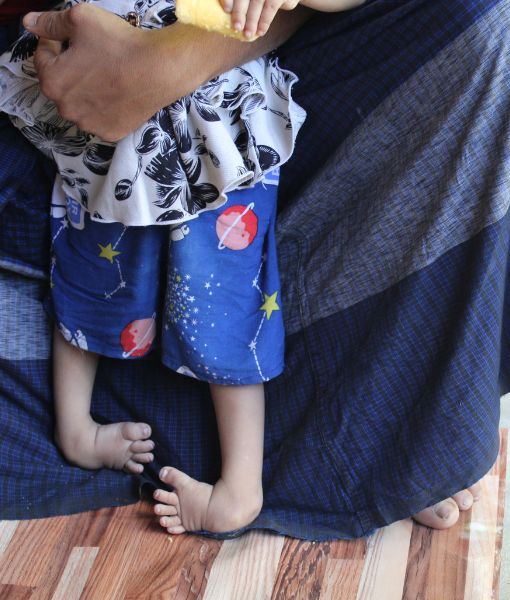What is clubfoot?
Clubfoot is one of the most common birth defects globally. Without proper treatment, clubfoot causes lifelong pain and disability. But what is clubfoot?
A normally developed foot becomes a clubfoot in the second trimester of pregnancy. Diverse soft tissues in the lower leg develop differently, resulting in short muscles and tendons and stiff ligaments. This affects the positions of the bones in the feet, giving it characteristics that are present at birth.
Clubfoot characteristics present at birth
Cavus: the midfoot has a high arch.
Adduction: the forefoot turns inwards in relation to the hindfoot.
Varus: the hindfoot (heel) turns inwards in relation to the lower leg.
Equinus: the foot pointing downward.

People worldwide have clubfoot. Only 20% is treated properly.
Newborns with clubfoot each year.
How often does clubfoot occur?
Clubfoot is one of the most common birth defects, affecting approximately 200.000 newborns each year. Boys are more often affected than girls and in 50% of the cases the condition is bilateral, affecting both feet. Only a small minority of the families have access to proper treatment and the support they need to end the disability the clubfeet causes.

What causes clubfoot?
In most cases, the exact cause of the disorder remains unknown. These feet are called idiopathic or isolated clubfoot. In a small minority of cases clubfoot occurs in combination with chromosomal or genetic abnormalities or syndromes. This is called syndromic clubfoot.
Clubfoot can run in families: in 25% of the cases, there is a family history with clubfoot. Scientific studies suggest genetics and environmental factors also play a role in the development of clubfoot.
